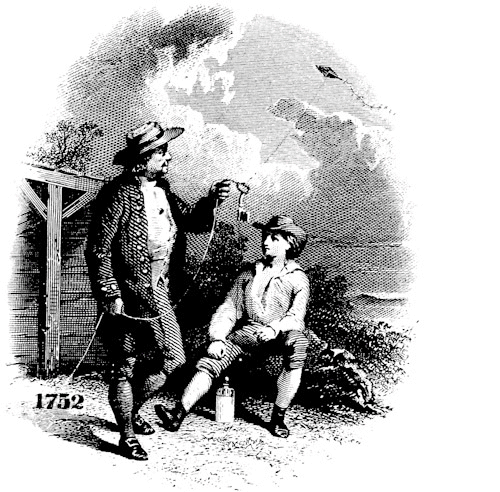In 1752, on a dark June afternoon in Philadelphia, the 46 year-old Ben Franklin decided to fly a kite. With the help of his son, William, they attached his kite to a silk string, tying an iron key at the other end. Next, they tied a thin metal wire from the key and inserted the wire into a Leyden jar, a container for storing an electrical charge. Finally, as the sky darkened and a thunderstorm approached, they attached a silk ribbon to the key. Holding onto the kite by the silk ribbon, Ben flew the kite and once it was aloft, he retreated into a barn so that he would not get wet. The thunder storm cloud passed over Franklin's kite, whereupon the negative charges in the cloud passed onto his kite, down the wet silk string, to the key, and into the jar. Ben however, was unaffected by the negative charges because he was holding the dry silk ribbon, insulating him from the charges on the key. When he moved his free hand near the iron key, he received a shock. Why? Because the negative charges in the key were so strongly attracted to the positive charges in his body, a spark jumped from the key to his hand. Franklin's experiment successfully showed that lightning was static electricity. You can experience this same reaction when you shuffle your feet on a carpet and reach for a metal doorknob.
Franklin was actually lucky to have survived, for after this famous incident, several other would-be-scientists who performed this same kite experiment were electrocuted.
Realizing that this form of electricity could be charged over a conductor and into the ground, he invented the lightning rod and conductor, providing the lightning an alternative path to the earth. Later in his life, lightning struck his own house, but his lightning rod saved it from burning.
For a beginner's guide to lightning, click!
< previous page

